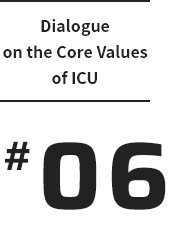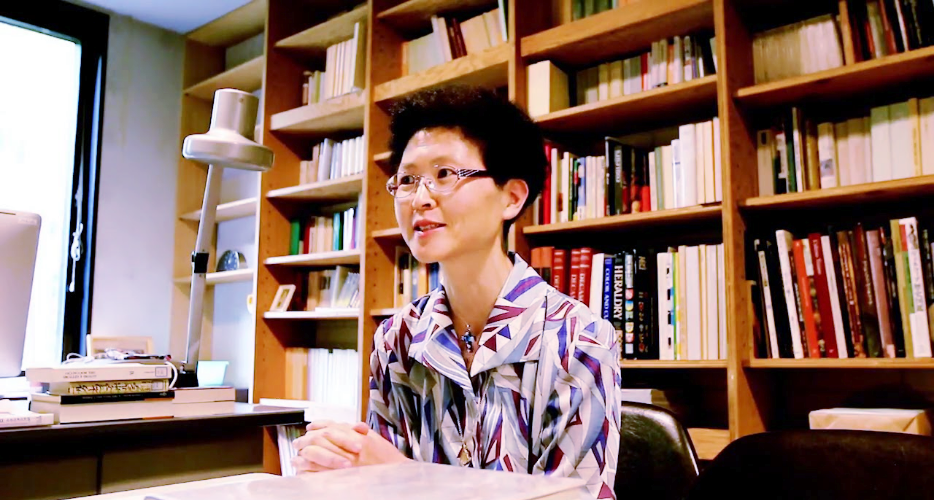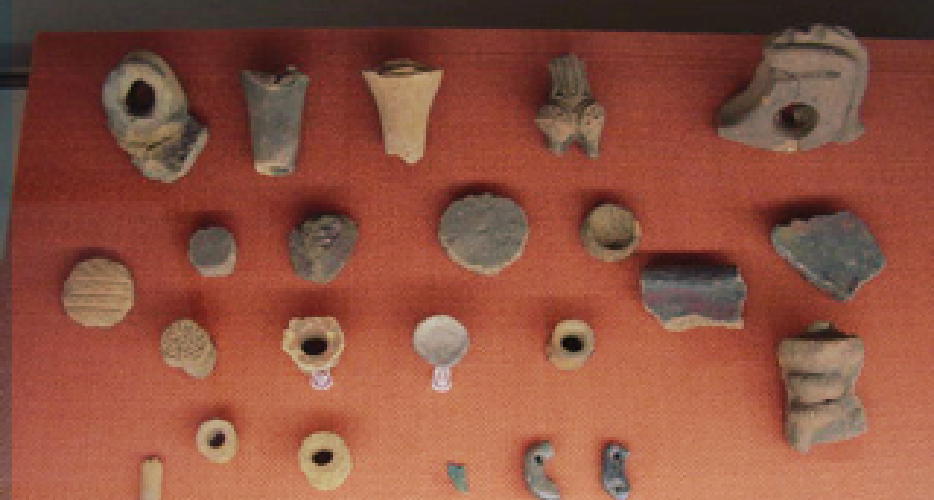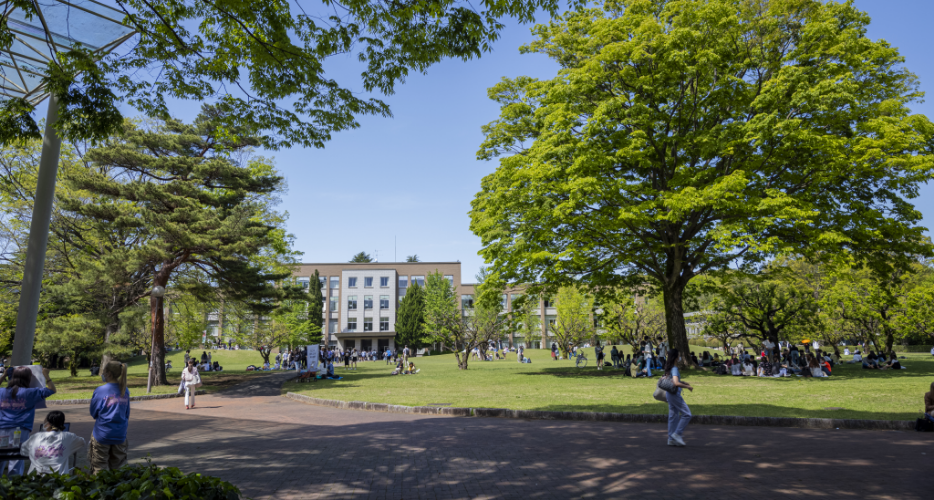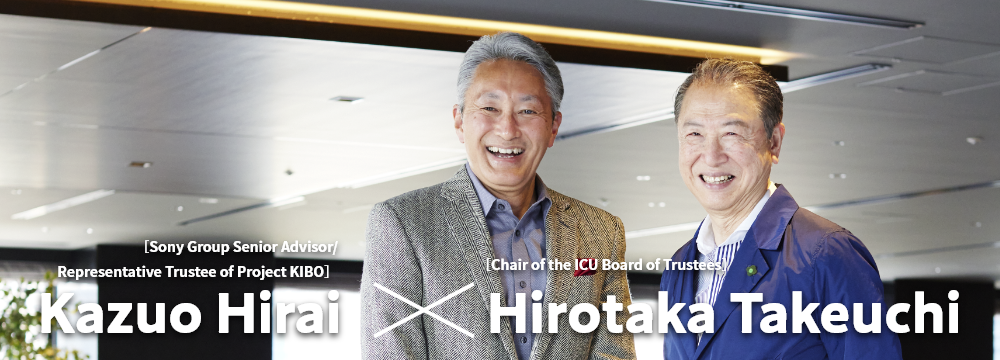
ICU Part-time Lecturer Toru Hayashi specializes in Japanese and Polynesian prehistoric archaeology. His earnest engagement with the discipline started as a student at ICU, where the campus sits atop archaeological remains. His dialogue with ICU President Shoichiro Iwakiri delves into the thrill of exploring the field from a liberal arts perspective.
#Archaeology #Liberal Arts #Archaeological Remains #Longer Time Span
Digging Deeper: Engaging Firsthand with Jomon Heritage Reveling in the world of archaeology à la liberal arts
This issue focuses on the discipline of archaeology, highlighting the quintessential liberal arts major at ICU.
The 620,000㎡ ICU campus is dotted with more than 40 buildings, including student dormitories and faculty housing. The spacious grounds and abundant nature are part of the University’s identity. Facilities have been built and expanded over the years since ICU’s foundation to meet the infrastructure needs required for research and education. Recent improvement measures have been implemented following the Campus Grand Design. The Troyer Memorial Arts and Science Hall, a major work in progress due to be completed in 2023, is expected to offer a venue for integrated learning across the arts and sciences.
Learning at ICU represents the most recent element of human activity that has continued on these premises since the paleolithic age. This makes the campus an ideal location for melding the arts and sciences. Archaeology courses were first offered at ICU in 1957, shortly after the University’s foundation, with coursework including unearthing artifacts at excavation sites on campus, a tradition that continues to the present day.
The ICU campus is situated along the Nogawa River on the southern periphery of the Musashino plateau on a hill called Kokubunji Cliff Line. The breezy terrain dates back 100,000 years, with abundant water, sunlight and a splendid view. Humans have lived here from the paleolithic age, with a settlement existing on the grounds during the Jomon period.
This dialogue highlights the significance of studying archaeology on the ICU campus where archaeological remains have been found.
The Troyer Memorial Arts and Sciences Hall
The building commemorates ICU founding Vice President Maurice Troyer and aspires to offer a space for deeper learning in the liberal arts, delving across the arts and sciences as befits a “University of tomorrow”. It is a venue for dialogue that values interaction between people in developing synergies, with state-of-the-art, eco-friendly facilities.
The Archaeology Research Laboratory will move into this new building along with exhibits of stratigraphic sections from the campus grounds, exemplifying the liberal arts style of learning in archaeology that integrates the arts and sciences.
Paragraph 01
Archaeology is a comprehensive study of the human condition
At present, there are 43 excavation sites on the ICU campus. The spectacular artifacts unearthed from the grounds over a long period of time are on display at the Hachiro Yuasa Memorial Museum located within the premises. Toru Hayashi, who teaches the subject at ICU, said they may represent only about 1% of what actually lies beneath the property. “It’s extremely rare for a university to have an archaeological site on campus, let alone a sizable Jomon settlement as at ICU,” he notes. Students thus have an exceptional opportunity to engage in excavations on campus for coursework at ICU.
What does this environment mean for the study of archaeology?
The dialogue started with President Shoichiro Iwakiri describing his impression of actually touching the earthenware excavated from the campus before this conversation. “Holding and feeling the weight of the pot was an incredibly fresh experience. It felt very real, totally different from looking at photos or visiting museums to see artifacts on display. Archaeology differs from other disciplines, as physical remains provide the only clues about human activity when written sources are unavailable. You also need to use your imagination to supplement the missing parts of the earthenware and employ science to analyze them. Work in this domain is extremely complex. Students can experience the whole array of activities required to explore the subject firsthand at ICU. In addition to instruction in theory, they can actually touch and feel what the Jomon people held in their own hands. This multifaceted approach exemplifies the liberal arts tradition.”
Hayashi replied, “Yes. As the discipline aspires to fathom the past, it requires us to integrate understanding of a multitude of subjects across the arts and sciences. Most people think of archaeology as a detailed study of bits and pieces excavated from archaeological sites. But that represents only the means. Archaeologists strive to learn about people and how they lived in the past: what kind of people used the excavated objects, why and how they used them, and how those items affected their lives. You can say this discipline is a comprehensive study of the human condition during a certain time in the past.”
Hayashi went on to explain that archaeology requires a typical liberal arts approach, as perspectives from other disciplines are indispensable. “With earthenware, you look at their physical and functional aspect as well as their cultural and social significance. They give us clues about the dietary conditions and health of the people who used them and their mindset. We do engage with the empirical aspect of the objects we find, but there are so many ways to understand how they were used and what they meant to the owners. Subfields such as theoretical archaeology and cognitive archaeology are developing to look at how to interpret the finds.”
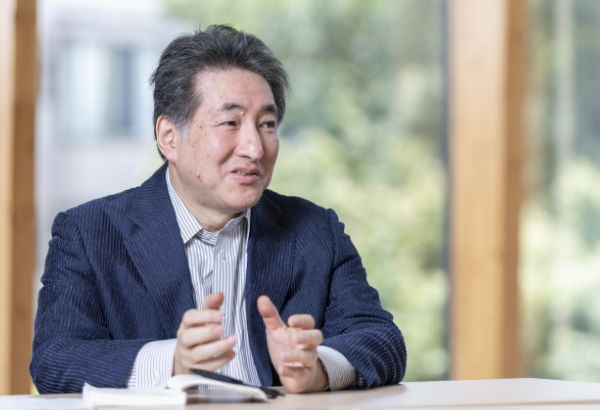
“Could you give us an actual example?” Iwakiri asked.
“Let me see. Let’s say we find fragments of stone implements scattered over a certain area, remaining from the manufacturing process. By observing how the pieces are spread, we can make certain assumptions about the production site: the position, which way it faced and how the maker used her right or left hand for different purposes in the process. We can deduce a lot from analogy. By stitching the existing research together, such as the theory that we have had more right-handed people since prehistoric times, we interpret what we find. The important thing is to ask questions and validate the evidence.”
Paragraph 02
From Jomon to Yayoi culture
Hayashi continued that we also need to focus on the timeline when studying the human condition at excavation sites. “Soil piles up where stone implements were created, but on occasion, we find the same location used at different points in time for the same purpose. I would suppose this was the result of some remaining parts surfacing after several hundred or thousand years, from which people from later periods would know that it was a place where stone tools were produced, inspiring them to do the same. I call this a sense of place. Humans seem to unconsciously perceive the attributes or spatial setting of a location.
He went on to explain that a global comparison following a time axis allows us to discover a lot. ”Farming had already begun in many parts of the world while, in Japan, Jomon people continued to hunt and gather food. The available evidence suggests this was because they did not need to engage in farming so soon. The Jomon period in Japan had four distinct seasons with plenty of water in terms of rainfall and humidity. The rich biological diversity provided an ideal environment for humans to live in. This is why they did not have to switch to agriculture so quickly. In the long run, temperatures fell, and people started to produce crops, but this happened several thousand years later than in the rest of the world.”
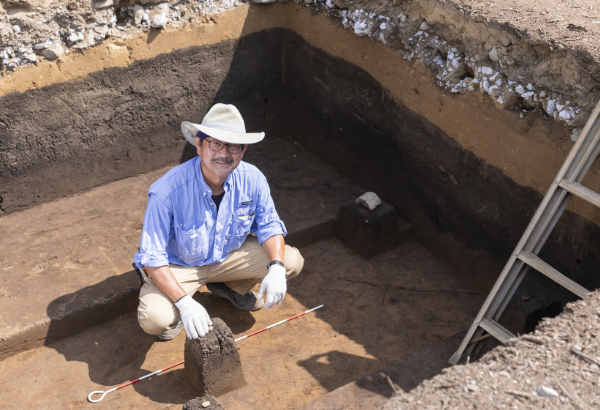
Iwakiri replied, “That’s very interesting. For humans, farming requires work and labor. We were late to start farming but blessed with nature. That is why there seems to be a kind of relaxed atmosphere about the Jomon period. The diverse culture may have affected our temperament, a topic that might be worth pursuing in the future.”
“I agree. The Jomon people were indeed a relaxed existence. But research suggests that their hunting and gathering required more work than we thought. We also know that they practiced a degree of environmental stewardship. For example, recent studies analyzing pollen found that they cut trees to cultivate chestnut groves and were able to harvest delicious and nutritious chestnuts which they consumed as staple food. They weren’t simply laid-back: they spared no effort in improving their lives proactively. Does this change your image of the Jomon people? Their lives evolved around nature, so they observed the surrounding environment, ranging from ants to the heavenly bodies, very closely and used that information to their best advantage. They must have possessed a vast array of knowledge about nature. When farming started in the Yayoi period, people needed know-how in agriculture, which led to division of labor and specialization with new skills accumulating that transformed the culture. This would have represented a drastic change.”
Paragraph 03
Intensifying the liberal arts experience
Iwakiri went on to say, “For students navigating the curriculum at ICU, this turning point can be compared to moving on to specialized courses for in-depth study in their major from those general education courses where the emphasis is on breadth. When the subject is narrowed down, it becomes even more important to maintain a wide perspective, and this has to be the result of a conscious effort. People have the potential to adapt to a wide range of approaches in life. They can live life the Jomon way, but also adapt to the Yayoi style, with specialties and division of labor. I feel we have a big picture here that illustrates the various potentials humans possess.”
As an alumnus, the liberal arts approach led Hayashi to his specialty, so he largely shares views about this tradition with the President. “The word adapt that you just mentioned is key. People can adapt to the Jomon or Yayoi way of life: these lifestyles do not contradict each other. In the ICU Graduate School Division of Comparative Culture, I was initially at a loss with so many courses to choose from: renaissance music, Chinese classics and linguistics, to cite just a couple of examples. But when I started delving into these topics, I found it interesting that they were all interconnected. From the perspective of humankind, our behavior and thinking are linked across the board. This experience transformed my perspectives for archaeology and inspired me to focus on theoretical aspects.”
Iwakiri then suggested they expand their interpretation with an analogy to facilitate understanding. “With regard to Sigmund Freud’s essay, ‘Delusion and Dream in Jensen's Gradiva’, our dialogue today has inspired me to see a parallel between archaeologists excavating antique fragments and strata, and people digging into their memory to recall forgotten past experiences. Science, knowledge and imagination help us reconnect with the past, which also relates to issues in human memory. Similarly, we realize that communities and societies are built on top of each other in a multilayered manner from ancient times. Archaeology is an academic discipline, but at the same time, I feel it connects the whole of humanity.”
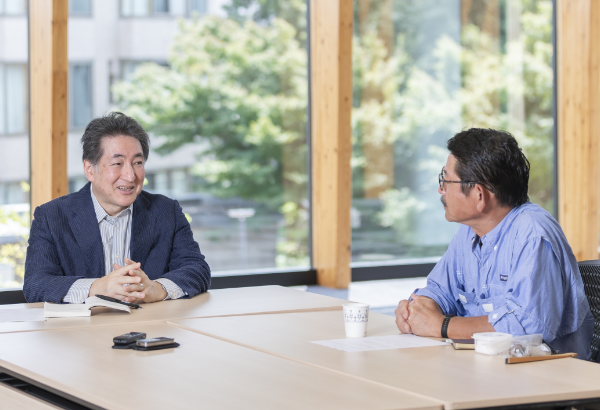
Hayashi replied, “I agree. We would not be here today had our ancestors not strived to live out their lives. We are connected directly with their existence and DNA, regardless of whether we are conscious of the fact or not. The objective of archaeology is to study humans, but the approach employed in the discipline is derived from science. By employing advanced technology for absolute dating and component analysis, we have data which were not available when the means of our observations were limited to the naked eye. Now we can deduce components of the environment during a certain period in time, like what kinds of plants existed. When we study the human condition based on science, everything comes together.”
Paragraph 04
Thinking with a longer time span
This exchange elicited another question from Iwakiri. “Can I ask you about something abstract? The time span in archaeology is longer than in most disciplines: you deal with a century, a thousand years, ten thousand years. On the other hand, in modern life we are always pressed for time, seeking and accommodating the new. From the perspective of contemporary life, I find the archaeological sense of time very attractive, in understanding subjects from a much longer timeframe. I’m curious to know what your take is on how archaeologists perceive time.”
Hayashi said, “It’s very true that the sense of time differs from other disciplines. Archaeology studies the past, but at the same time it provides a perspective from the future: observing the present from a thousand years later. We basically tend to live life tackling immediate problems. But when it becomes necessary to think about the future, the only reference we have is the past. One of the missions of the closely related fields of history and archaeology is to connect the past, present and future.”
Iwakiri talked about another point that holds true in relation to liberal arts. ”The learning endeavor does not imply acquiring skills that will become useful immediately. Absorbing something that may not seem exactly useful in the short term may be meaningful in the long term. Things that seemed unrelated will suddenly connect via a certain route. For this to happen, we need to sow the seeds inside us. It may not be easy to persuade others to do so as it takes time to appreciate its worth. As full-fledged adults with some experience in life, we should remind students more often that this is important.”

Hayashi said, “Thinking in the long term is important. Realizing that we are related to people who lived long ago inspires our imagination. We all wonder how our descendants will turn out. We may not witness them with our own eyes, but if our ancestors thought the same way, we want to hear what they thought and interact with them. We also want to pass the baton to the future. We can expand our long-term perspective infinitely. The same goes for learning. The late Professor J. Edward Kidder, my mentor at ICU, told me I would not be rewarded for what I learn in class right away. We will go through a lot during our life’s journey. What’s important is that, on occasions, we will suddenly be able to draw on things we learned. I should also talk about this with my students more often.”
[Postscript]
Passion is infectious
My impression of Hayashi was that he enjoys archaeology tremendously. He told me I was right. Students want to know what excites him, so when he says, “I’m riveted, aren’t you?”, curiosity breeds curiosity: the fascination for a certain field is incited by inquisitiveness in both mentors and their protégés. This is the key to quality education.
I was also impressed by their ideas about the time frame. The world you see and its significance changes according to how you grasp the concept of time. I was convinced that the liberal arts approach, which requires a multidisciplinary perspective for all subjects including archaeology, also invites us to employ a collection of clocks with different time-keeping scales.
Related Information
PROFILE
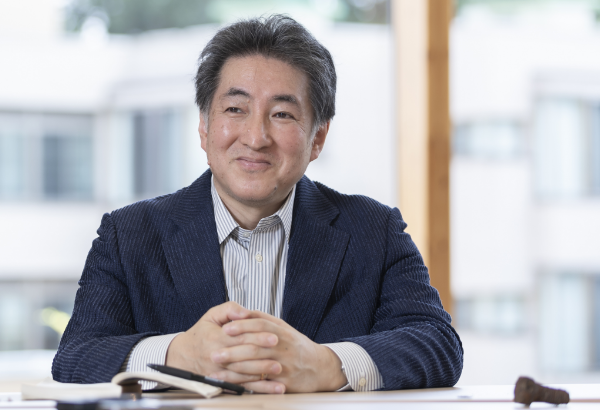
Dr. Shoichiro Iwakiri, President, International Christian University
The President of International Christian University specializes in French literature. In 2008, he was awarded the 15th Yuasa Yoshiko Prize (Section of Drama Translation). He completed the Third Cycle and received a DEA from the Department of Science of Texts and Documents, Paris Diderot University (Paris 7). Prior to becoming President of ICU in April 2020, he was Director of the Admissions Center and Dean of the College of Liberal Arts.
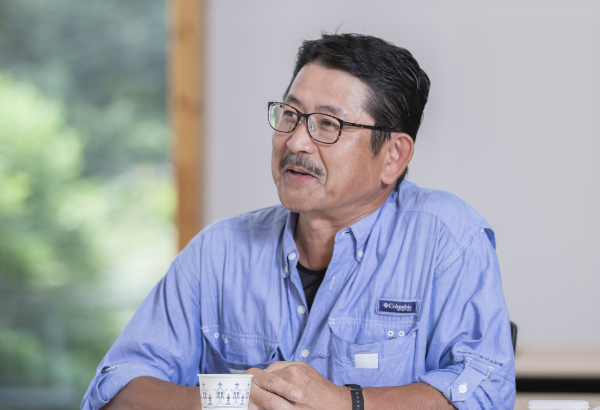
Toru Hayashi Part Time Lecturer
Hayashi graduated from ICU College of Liberal Arts and received a Master’s degree from ICU Graduate School Division of Comparative Culture. He specializes in prehistoric archaeology, especially stone implements and fishing culture in Japan and Polynesia. He is also engaged in uncovering the history of Easter Island from the perspective of environmental adaptation. He has been involved in research at domestic and overseas excavation sites. At ICU he lectures and provides practical instruction in excavation. He also advises student organizations as well as art and archaeology research groups.


